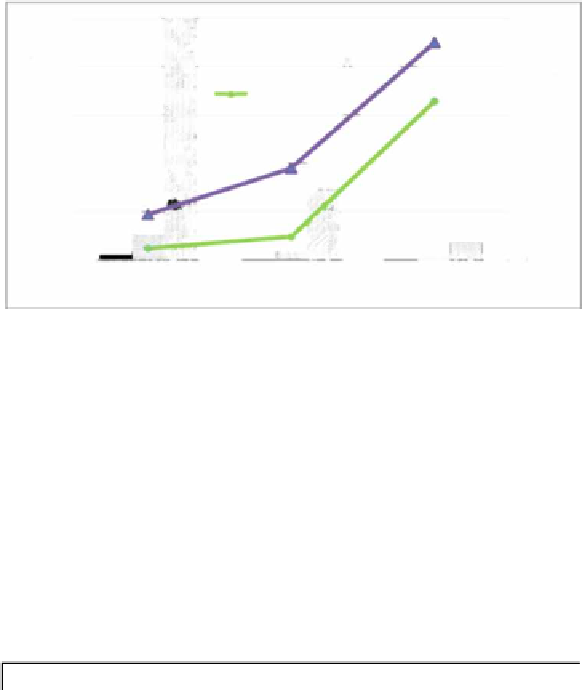Information Technology Reference
In-Depth Information
Fig. 4.
Performance and accuracy characteristics of GUARD. The graph shows (in bars) the
slowdown (%) of application being monitored for different throttling levels and signature sizes.
The graph also shows (in lines) the false positive rate (%) for different signature sizes used in
GUARD.
detection for 8-core, 16-core, and 32-core CPUs with near-zero (less than 2%) perfor-
mance overhead at
full
throttling. Table 3 shows the amount of GPU resources required
to perform data race detection, for different CPU configurations, at different throttling.
Ta b l e 3 .
Number of GPU SMs required for data race detection, for different CPU core count, at
different throttling. The GPU SM architecture is described in Section 4
CPU Core Count quart throttling half throttling full throttling
4
1
1
1
8
1
2
3
16
3
6
12
32
12
24
48
On detailed analysis of the performance of the GPU kernel, we observe that the
performance overhead of GUARD is mainly due to two reasons: (i) data accesses related
to the long signatures; and (ii) synchronization of the hundreds of threads used for H-B
comparisons. GUARD's GPU kernel stalls only for about 1.54% of its execution cycles
due to unavailability of data in any threads (memory related stalls). We see that the
signature table size is small enough to fit inside the GPU L2 cache. For a reasonable
GPU L1 data cache size, as in Table 1, the L1 data cache hit rate is more than 99%. We
also observe that GPU does a good job of
coalescing
memory accesses and limiting the
impact of data access latency on the performance of GUARD. Thread synchronizations,
on the other hand, are necessary for the correctness of H-B algorithm when mapped to
a highly parallel architecture like GPU.





























